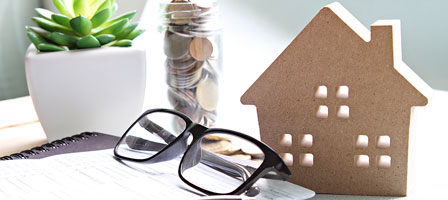EXCLUDING THE GAIN FROM A HOME SALE
You may qualify to exclude from your income all or part of any gain from the sale of your main home if you meet certain qualifications. The following are highlights of tax rules pertaining to the sale of a home (primary personal residence). These rules are complex and anyone contemplating selling a home or residential rental property should consult with this office in advance of initiating the transaction. This is one area of the tax law where preplanning can save literally thousands of dollars in taxes.
Maximum Amount of Exclusion – You can exclude the entire gain on the sale of your main home up to:
1) $250,000, or
2) $500,000 if ALL of the following are true.
a) You are married and file a joint return for the year.
b) Either you or your spouse meets the ownership test.
c) Both you and your spouse meet the use test.
d) During the 2-year period ending on the date of the sale, neither you nor your spouse excluded gain from the sale of another home.
Reduced Maximum Exclusion – You can claim exclusion, but the maximum amount of gain you can exclude will be reduced, if either of the following is true.
1) You did not meet the ownership and use tests for a home you sold due to a change in health or place of employment.
2) Your exclusion would have been disallowed because of the rule described in More Than One Home Sold During 2-Year Period, except that you sold the home due to a change in health or place of employment.
More Than One Home Sold During 2-Year Period – You cannot exclude gain on the sale of your home if, during the 2-year period ending on the date of the sale, you sold another home at a gain and excluded all or part of that gain. Exception: if you sold the home due to a change in health or place of employment, you can still claim exclusion, but the maximum amount you can exclude may be reduced.
Ownership and Use Tests – To claim the exclusion, you must meet the ownership and use tests. This means that during the 5-year period ending on the date of the sale, you must have:
1) Ownership Test: Owned the home for at least 2 years, and
2) Use Test: Lived in the home as your main home for at least 2 years.
Period of Ownership and Use – The required 2 years of ownership and use (during the 5-year period ending on the date of the sale) do not have to be continuous. You meet the tests if you can show that you owned and lived in the property as your main home for either 24 full months or 730 days (365 × 2) during the 5-year period. Short temporary absences for vacations or other seasonal absences, even if you rent out the property during the absences, are counted as periods of use.
Married Persons – If you and your spouse file a joint return for the year of sale, you can exclude gain if either spouse meets the ownership and use tests.
Death of Spouse Before Sale – If your spouse died before the date of sale, you are considered to have owned and lived in the property as your main home during any period of time when your spouse owned and lived in it as a main home.
Home Transferred from Spouse – If your home was transferred to you by your spouse (or former spouse if the transfer was incident to divorce), you are considered to have owned it during any period of time when your spouse owned it.
Use of Home after Divorce – You are considered to have used property as your main home during any period when:
1) You owned it, and
2) Your spouse or former spouse is allowed to live in it under a divorce or separation instrument.
Business Use or Rental of Home – You may be able to exclude your gain from the sale of a home that you have used for business or to produce rental income. However, you must meet the ownership and use tests.
Depreciation for Business Use – If you were entitled to take depreciation deductions because you used your home for business purposes or as rental property, you cannot exclude the part of your gain equal to any depreciation allowed or allowable as a deduction for periods after May 6, 1997. If you can show by adequate records or other evidence that the depreciation deduction allowed was less than the amount allowable, the amount you cannot exclude is the smaller figure.
Property Used Partly as Your Home and Partly for Business or Rental During the Year of Sale – In the year of sale you may have used part of your property as your home and part of it for business or to produce income.
Examples are:
- A working farm on which your house was located,
- An apartment building in which you lived in one unit and rented out the others,
- A store building with an upstairs apartment in which you lived, or
- A home with a separate structure used for business or to produce income. Homes where the business use was an integral part of the same structure, such as the use of a room in your home, do not fall under this rule.
If you sell the entire property, you should consider the transaction as the sale of two properties. The sale of the part of your property used for business or rental is reported as the sale of business property and is generally a taxable event (but see next paragraph). The sale of the part used as a home is treated as the sale of your home subject the exclusion of gain provisions, if otherwise qualified.
Note: The IRS has made it quite clear that for the business portion the exchange of a home can qualify for both the §121 home sale exclusion and §1031 like-kind exchange deferral treatment. This can occur where the property was used as a principal residence and a business consecutively (e.g., use as a principal residence followed by rental of the property) or concurrently (a portion of the home used as a principal residence and a portion used as a home office). Please call this office for addition information regarding how to qualify for the tax deferral of the business portion gain.







Leave a Reply
Want to join the discussion?Feel free to contribute!